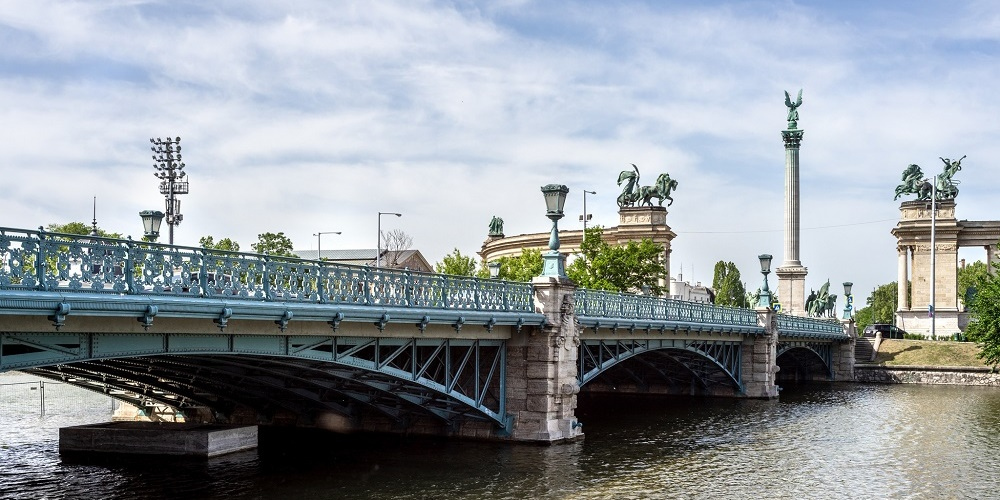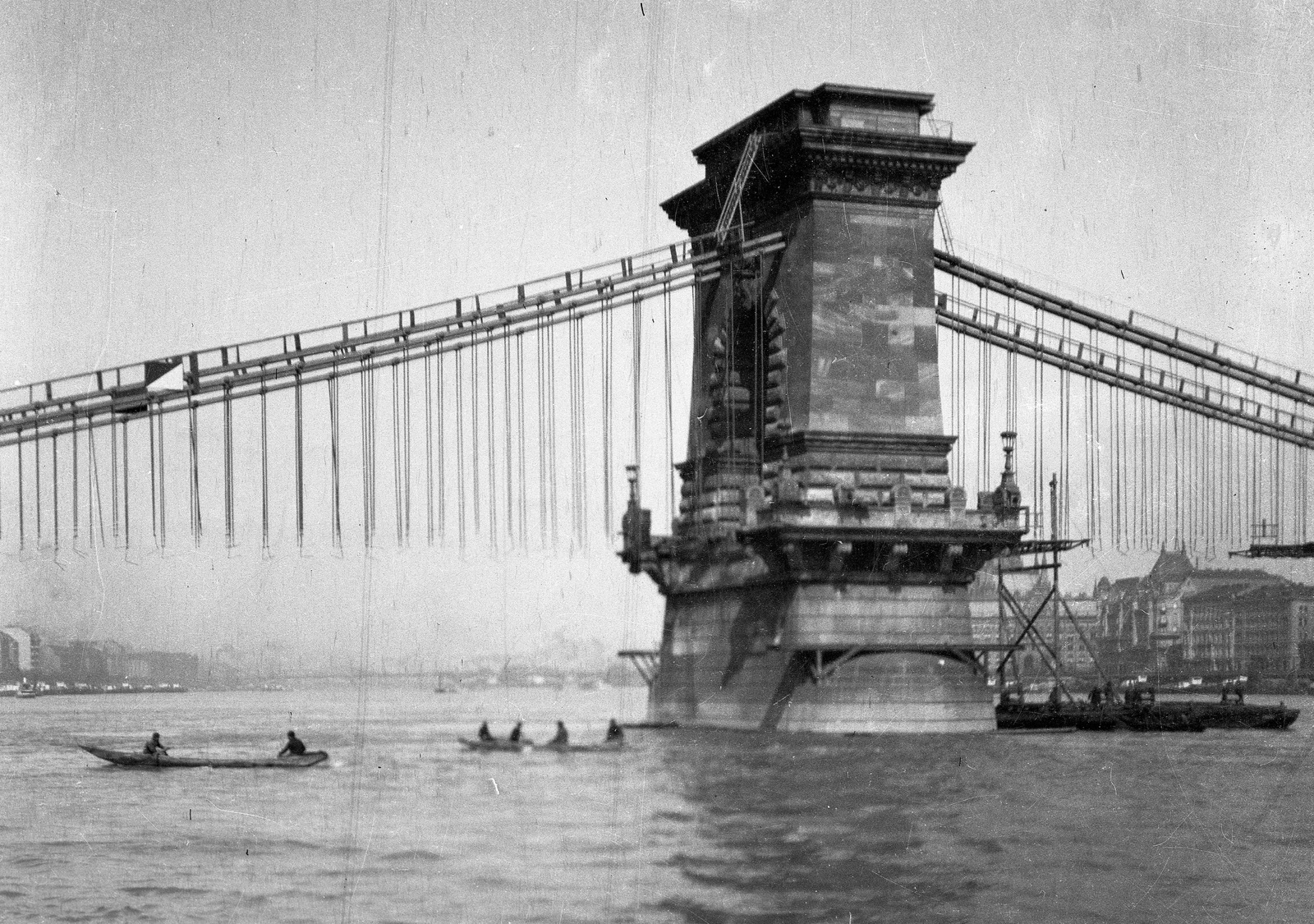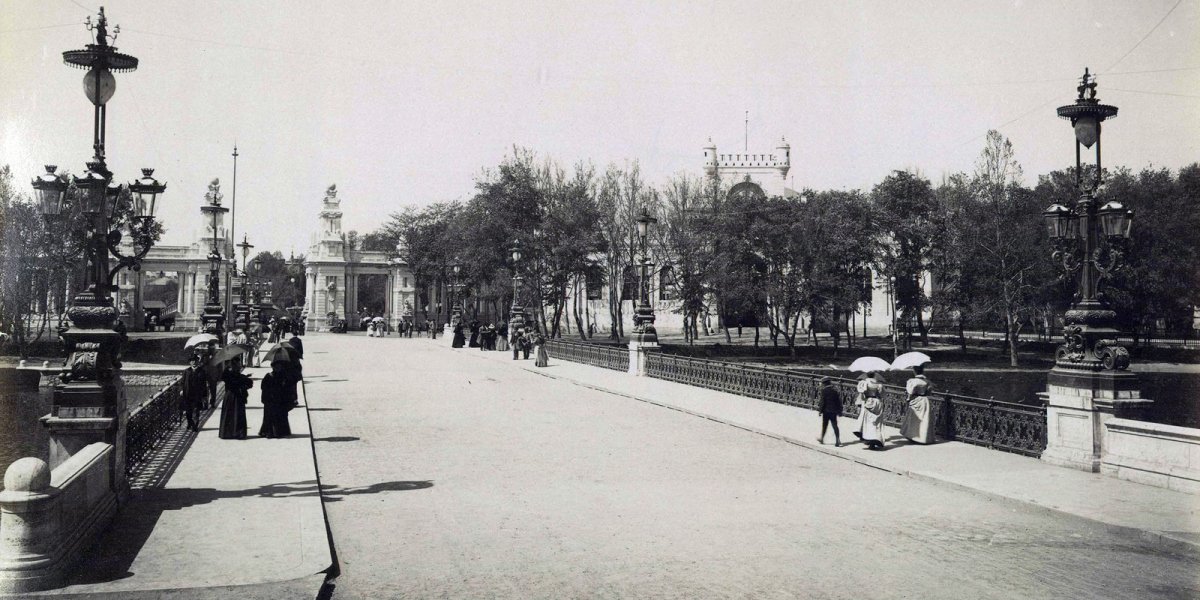Zielinski was one of the defining personalities of the late 19th and early 20th centuries. As one of the creators of reinforced concrete construction in Hungary, his works are still standing in Budapest and all over the country, a good example of which is the Margit Island Water Tower. The plans for the tower were not made by him, but by Rezső Vilmos Ray, but the construction was done by Zielinski. Reinforced concrete was a relatively new material at the time, Zielinski was one of the pioneers of its domestic application.
In addition to the construction, of course, he also designed: for example, the Zielinski Bridge in City Park which is bearing his name, for which a designer was sought in a tender, and Zielinski competed with such well-known engineers as János Feketeházy, who also designed the Liberty Bridge.

The Zielinski Bridge (Photo: Balázs Both/pestbuda.hu)
The first doctoral appointment of the Technical University was a great celebration. On 17 January 1902, the newspaper Magyar Nemzet reported:
“The first doctor of engineering sciences, Szilárd Zielinski, a graduate engineer and a private university professor, was appointed this morning at the Royal Joseph Polytechnic University of Hungary.
The members of the Budapest Association of Engineers and Architects, the students of the university, whose old wish was fulfilled by the fact that the title of doctor can now be won by young people who excel in engineering, have made this day an enthusiastic and beautiful celebration. The presence of Gyula Wlassics, Minister of Culture, also raised the significance celebration."
About the appointment, the paper noted that it is simpler than the University of Sciences’, but very dignified. After the speeches, Zielinski took his doctoral oath.
On 22 March 1901, Franz Joseph donated the doctoral title to the Royal Joseph Polytechnic University. Zielinski submitted his dissertation "Settling the Traffic Conditions of Budapest" almost immediately.

Drawing of the planned network (Source: Magyar Mérnök- és Építész-Egylet Közlönye, Issue 10 of 1901)
Zielinski, then 42 years old, was already a renowned engineer before the turn of the century, with significant achievements in both structural and civil engineering nationwide. The high-speed railway network under Budapest was the main element of his doctoral dissertation: the lines would have networked the capital, and the high-speed railways (metros) would have crossed the Danube in two places.
In this dissertation, Zielinski not only wrote about the underground network serving public transport, he would have already connected the railway lines around Budapest under the ground, to which passengers could have boarded at underground stations. The trains would have been assembled at the rail yard outside the city, transported underground by electric locomotives, and stopped at three locations under Pest: at the Nyugati (Western) Railway Station - the surface station would have been closed -, at Astoria and the corner of the Outer Ring Road - Üllői Road. The railway lines did not cross the Danube, so east-west traffic would not have passed under the river.
How seriously was the plan taken? Not only was it enough for the doctoral degree, but MÁV also started to deal with it seriously, they also organised a special department for this, but the beautiful dreams were swept away by World War I.
Zielinski made other plans for Budapest, such as a pedestrian bridge to replace today's Erzsébet Bridge, on which trams would have run, but since the then downtown of Pest would have been too crowded for trams to reach the bridge on their own, therefore, a crane would have lifted the trams.

The pedestrian bridge, designed in 1890 to replace the present-day Erzsébet Bridge (Source: The Hungarian Museum of Science, Technology and Transport. MMKM TEM 247)
Of course, he had some realised plans in Budapest, in the capital we know today, a lot can be connected to Zielinski beyond the bridge bearing his name.
Zielinski took over the static design tasks for the renovation of the Chain Bridge from Antal Kherndl. The bridge was completely rebuilt between 1914 and 1915, in fact a new bridge was built. He received royal recognition for his role in renovating the Chain Bridge.

He received royal recognition for his work around rebuilding the Chain Bridge (Photo: Fortepan/No.: 55666)
However, this did not end his work with the bridge, as the brand new bridge was ruined very quickly, so Zielinski was asked to assess what could be wrong, noting in his report that there were shortcomings in both the structure and construction of the track. The new roadway was then built on Zielinski’s suggestions.
The diversity of his designing skills is shown by the fact that he prepared the plans of several other buildings, such as the structural plans of the Academy of Music in Liszt Ferenc Square.
Szilárd Zielinski was one of the renovators of Hungarian architecture, if not in his style, but in the use of materials, because without reinforced concrete, of which he was one of the early domestic users, modern cities would not exist today. In addition to design and construction, Zielinski also taught at the Technical University, passing on his knowledge to generations of engineers. Among other things, Szilárd Zielinski's name is preserved by an award given to outstanding engineers by the Hungarian Chamber of Engineers. He did a lot for them and he was the first president of the association.
Cover photo: The opening of the Zielinski Bridge in 1896 (Photo: Fortepan/Budapest Archives, Reference No.: EN.BFL.XV.19.d.1.09.030)



































Hozzászólások
Log in or register to comment!
Login Registration